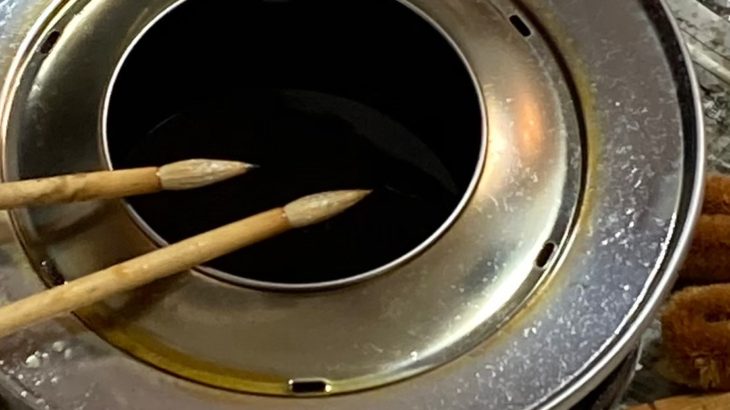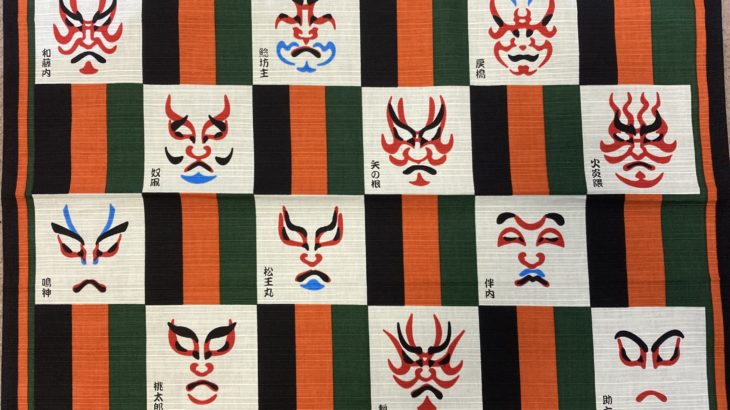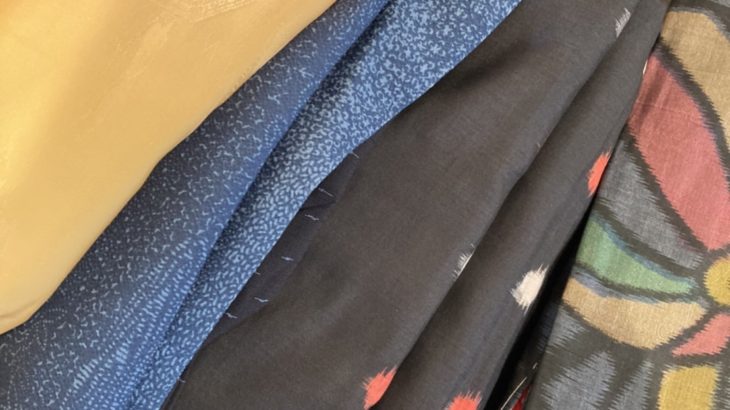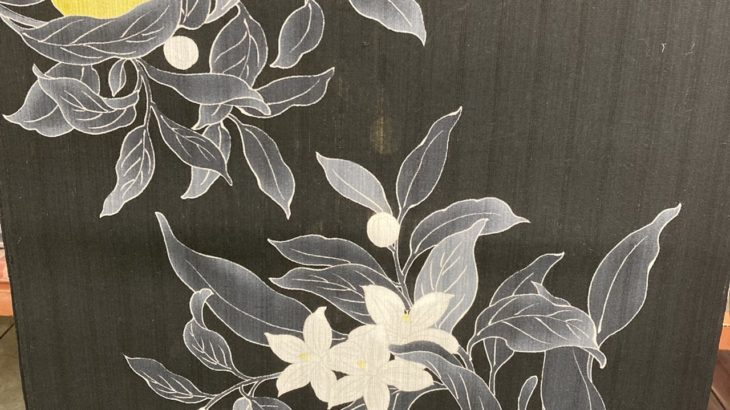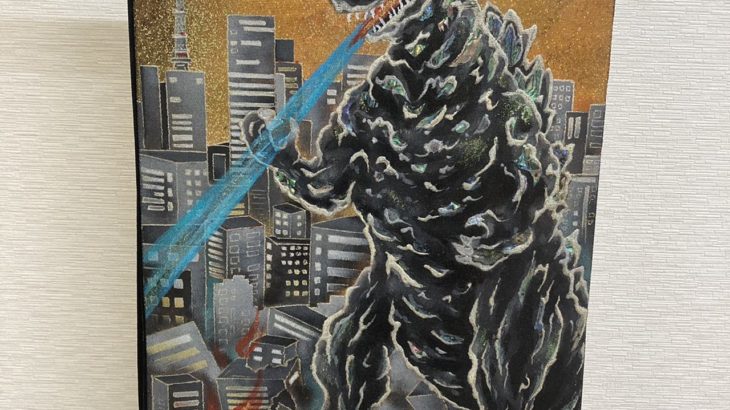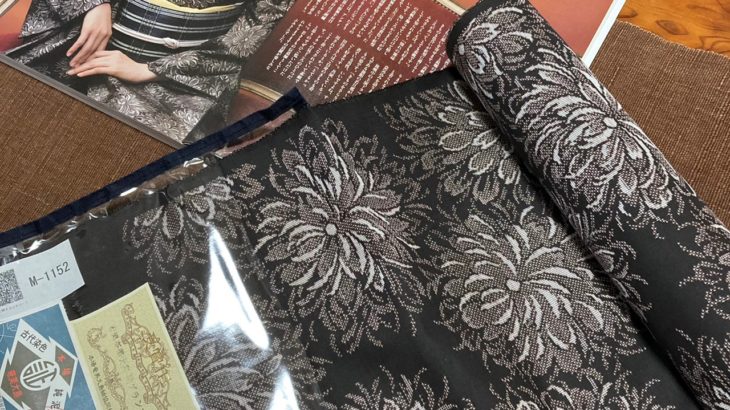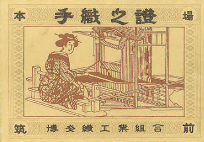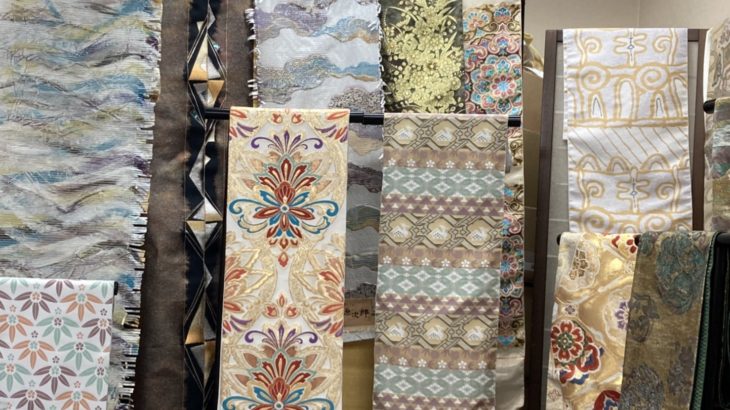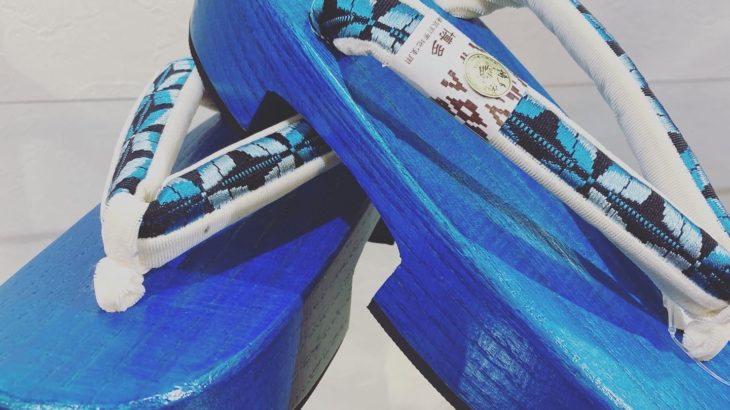Hello, this is Shinji from Warashibechoja JP. The New Year has begun… We are gradually gaining recognition through Instagram, and we are busy with inquiries from our customers. As the Chinese zodiac sign for this year is a rabbit, I hope that 2023 will be a year of leaps and bounds.In the midst of all this, I had the opportunity to visit the studio of a kimono artist who has been a good friend of mine for a long time, and experience a part of the wax-dyeing process. What is Batik? It is a dyeing method using wax that is used all over the world, and is said to have been used in Japan since the Nara period (710-794). It is said that the cloth was hardened with wax to prevent dyeing, then the surrounding area was dyed and the wax was removed to add patterns. Creation procedure 1) Use a brush to lay down the wax on the dyed-out area. The wax will harden quickly at this point, so it is a game of speed to write before it hardens. 2) The area covered with wax is dyed with an anti-dyeing agent, so the surrounding area is dyed. In […]
こんにちは、わらしべ長者JPのシンジです。新年が明けました…。Instagramで知名度も少しずつ上がり、お客様からの問い合わせで追われる日々を送っています。今年の干支はうさぎという事もあり、2023年は飛躍の年になれればと思います。そんな中、以前から仲良くさせて頂いている着物作家の先生の工房に行かせて頂き、ろうけつ染めの一部を体験してきました。 ろうけつ染めとは 世界中で行われている蝋を使う染色方法で、日本では奈良時代から行われていたと言われています。布地を蝋で固め防染したのちに周りを染めてから蝋をとる事で文様を付けたと言われています。 作成手順 ① 筆を使い、染め抜きの部分を蝋で伏せていきます。この時、すぐに蝋は固まってしまうので固まる前に書いていくので、スピードとの勝負になります。 ② 蝋で伏せた部分が、防染されて染まらないので、周りの部分を染めていきます。刷毛を使って挽き初めを行う場合が多いですが、今回は小さな刷毛を使いぼかし染めを行いました。 ③ 薬剤を使い蝋を取り除き、今度は蝋で伏せて染まっていなかった所の周りを蝋で伏せていき、染め抜いた部分を染めていきます。 ④ また、薬剤を使い蝋を取り除いていき完成します。多いものではこの工程を20回程繰り返すものもあります。 ぼかし染め 今回の工房の先生のご厚意で難しいと言われているぼかし染めを体験させて頂きました。下手に行うと四角く染まってしまうので、とても難しい作業になります。コツは、全体を霧吹きを使い薄く水で湿らせてから染料をのせて刷毛で広げていきます。とても難しい作業になります。先生に、見本を見せて頂きましたが、さすが匠の技でした。 蝋の調合 今回は時間の関係で先生に行ってもらいましたが、季節や気温、湿度によって蝋の調合を変えていきます。例えば、冬は伏せた蝋が割れない様に少し粘り気のある柔らかな蝋を使います。逆に夏は、蝋がくっつかない様に硬めの蝋を使います。パラフィンワックスと蜜蝋等を混ぜて使う事が多いですが、その工房によって配合は少し異なります。調合には長い経験が必要になります。 今回は、ろうけつ染めをご紹介させて頂きました。今後も、色々な工房にお邪魔させて頂こうと思いますので、お楽しみにして下さい。 Instagram:わらしべ長者.JPECサイト: Warashibechoja.jp
Hello, this is Shinji from Warashibe-choja.jp. Summer is approaching, and for the first time in three years, fireworks displays and summer festivals will be held in various places in Japan. I think it is a good idea to go out in a kimono or yukata this summer.In this issue, I would like to introduce the best accessories for kimonos and yukatas. 1、Han-Eri Han-Eri is to be attached to a long undergarment to be worn under a kimono. Recently, more and more people wear a hanbira under a yukata (summer kimono) as a simple kimono.In summer, beaded Han-Eri, which is easy to clean, and lace Han-Eri, which looks cool, are also popular.There are also many stylish Han-Eri that can be worn with non-summer kimonos. 2、Obidome Obidome is an ornament that is placed through the obijime so that it comes to the front of the obi.There are beautiful jewel-like obidome, wooden obidome, and authentic wagashi-style obidome made of colored clay by a former wagashi (Japanese confectionery) craftsman. The sparkling and shiny ones can be worn with formal kimonos, while the others can be worn with everyday clothes. Some overseas customers buy them as pendant tops as well. 3、Zori ( = Japanese footwear […]
Hello, this is Shinji from Warashibechoja JP. It is getting warmer and warmer, the cherry blossoms have started to bloom, and it is a good season to go out in kimonos. My Instagram, which I started last year, is going well and I now have more than 1,200 followers. Thank you very much. This time, we have received many questions from our customers, so we would like to write an article based on the mutual thoughts of a recycled kimono shop and a kimono shop dealing with new kimonos. 1、Difference between recycled kimono and new kimono 1, Size Generally, there is an image that recycled kimonos are old, but in fact, there is a problem before that. It is the width of the fabric. The width of an old kimono is about 9″5″ (=about 36 cm), but the width of a recent kimono is generally 1 shaku (=37.8 cm) or more. The longest kimono is 1 shaku 1 sun (= translates to 41.5 cm).Japanese people are said to have been small in the past, but this is not true. The way to measure the length of the Yuki (hand length in kimono) was different, and many old kimono were short. […]
Hello, this is Shinji from Wareshibe-choja.jp. This time, I would like to talk about yukata, a Japanese summer tradition. It is only March, but in order for consumers to see yukata, manufacturers prepare them at the end of last year, and in March, retailers go to wholesalers and manufacturers to stock them, which is the flow of the kimono industry. Recently, due in part to the impact of the H1N1 influenza, the main trend has been to produce to order in order to avoid overstocking. 1, History of Yukata During the Heian period in Japan, the main type of bath was a steam bath, and people bathed in a linen kimono worn at that time. In the Kamakura period, people bathed in loincloths and underwear called yumonji, and in the Azuchi-Momoyama period, people began to bathe naked. In the Edo period (1603-1867), after the spread of public bathhouses, the common people began to wear a cotton kimono called yukatabira to absorb excess water after bathing, which is said to have been the beginning of the yukata. 2, Spread of yukata In the Edo period (1603-1867), yukata, which were worn after taking a bath or as a nightgown, gradually came to […]
Hello, this is Shinji from Warashibe-choja.jp. Speaking of Nishijin, it is the largest obi production area in Japan.As I sometimes advertise on Instagram (@warashibe-choja.jp), I’ve been working with the craftsmen of Nishijin-ori to find ways to introduce Nishijin-ori to the world. This time, I would like to introduce some of the things we are working on with the craftsmen of Nishijin. History of Nishijin As I have mentioned before, after the Onin War (1467-1477), weavers who had scattered to various places returned to Kyoto and resumed weaving. The name “Nishijin” came from its location west of the Kyoto Imperial Palace. Types of Weaving Weaving has been flourishing since the 5th century, and after the Onin War, the area was called Nishijin, and this year marks 555 years since then. During that time, many techniques have been born and disappeared. I would like to introduce some of the techniques and weaving methods that still remain today. Tsuzure-ori The origin of Tsuzure-ori is said to be in Egypt, where Tsuzure-ori clothing was found in a royal tomb in the 15th century BC. It is said to have been introduced to Japan in the Asuka period, but after that, it was no longer […]
Hello, this is Shinji from Warashibe Chosha JP. This time, I went to Amami Oshima to study how Oshima tsumugi is made.I talked to a craftsman who actually makes Oshima tsumugi kimonos. Oshima tsumugi is a plain weave kimono made in Kagoshima Prefecture. There are many types of Oshima pongee, including mud Oshima, indigo Oshima, white Oshima, and colored Oshima. This time, I would like to introduce you to the authentic Amami Oshima mud Oshima. 1. What is Oshima tsumugi? Oshima tsumugi, known as one of the three major pongees in Japan, is characterized by its lightness and durability. The yarn is yarn-dyed to express really fine patterns.The yarn is dyed in the boiling water and mud fields of the tehchigi (Raphiolepis umbellata). A chemical reaction between the tannic acid in the water and the iron in the mud creates a black color that is unique to Oshima tsumugi. 2, the prestige of Oshima tsumugi As I will explain later in this article, Oshima tsumugi is a very expensive fabric that requires a lot of work. The price of a kimono is not necessarily the same as its style, and Oshima tsumugi is more like jeans in terms of clothing. […]
Hello, this is Shinji from warashibe-choja.jp. This time, I’d like to talk about Hakata-ori, the fabric of Fukuoka Prefecture, my birthplace. Many kimono fans have at least one piece of Hakata-ori because it is easy to tie and does not fall apart easily. This time, I would like to talk about Hakata Obi, which is loved by both beginners and experts of kimono. History of Hakata-ori In 1235, during the Kamakura period (1185-1333), Mitsuta Yasouemon traveled to Song Dynasty (960-1279) in China to learn Danshi weaving and invented floating weaves such as “Tokko” and “Hana-zara” with designs of Buddhist altars. Kenjyo-Hakata-ori After the Battle of Sekigahara, Hakata-ori entered a new era under the Kuroda Clan and became known throughout Japan. Hakata-ori was chosen as a gift for the Edo shogunate. The pattern chosen was the “Tokko-hana-zara” pattern, the origin of Hakata-ori. In addition, Ichikawa Danjuro VII, a popular Kabuki actor at the time, wore Hakata-ori in his performance of Sukeroku Yukari no Edo Zakura (The Cherry Tree of Sukeroku), which led to the spread of Hakata-ori throughout Japan. Goshiki-kenjyo I often find people who say, “Hakata-ori has many similar colors, doesn’t it? In fact, Hakataori has colors that represent the […]
Hello, this is Shinji from Warashibe-choja.jp. Before COVID-19, I saw many tourists in kimono in Kyoto, but now there are fewer and fewer. I used to see people wearing furisode and hanhaba-obi. However, there is actually a reason why people wear hukuro-obi when they are involved in kimono.Depending on the material of the obi and the shape of the obi, there is a certain prestige to the obi as well as the kimono. In this article, I would like to introduce the different types of obi. 1,Type of Obi There are various types and materials of obi, and the grade of the obi varies depending on its shape and material. In this article, I would like to talk about some of the most common types. It is said that the obi was first created in the Muromachi period (1336-1573), and until then, the kimono was held in place with strings. When Ashikaga Yoshimasa was the shogun, the obi was called hiraguke obi, which is about 8cm wide and 3m long. The hiraguke obi is now used as an obi to be tied to the hanten at festivals. ① Hukuro-obi As the name suggests, a sack obi is an obi that […]
Hello, this is Shinji from Warashibe-choja.jp. This time, I will talk about how to store Zori and bags.Generally, it is common to all footwear, but please do not put it in a box immediately after going out. Zori has low humidity. If the back of the Zori is wet, it may cause mold or the bottom to come off. Let’s keep it dry enough. How to care Zori with tatami mats on the surface For Zori and Geta (= Japanese clogs) whose surface is made of tatami mats, wipe the surface of the tatami mats and dry them. Zori with a leather surface Zori sandals with a leather surface should be wiped well with a soft, dry cloth. Zori and bags made of enamel leather on the surface Wipe well with a soft, slightly moistened cloth. It is recommended that you occasionally clean your shoes with cream.Leather products such as enamel can be cleaned with benzine, but never use thinner, solvent-containing shoes or leather cream. It may scratch the surface of the enamel. Zori and bags made of Saga Nishiki For fabric products such as Saga Nishiki (= Japanese textiles using gold and silver threads), use a soft brush to […]
